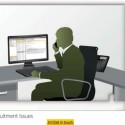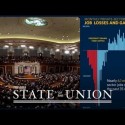 I love hearing the news that one of our clients had a great result using the work we did for them. The most recent big win I’m happy to report is Manatt, Phelps & Phillips, LLP, won a major lender liability/wrongful foreclosure action, obtaining a complete defense verdict in favor of its clients. Cogent Legal was hired to assist the Manatt trial team by creating graphics that helped bring order and understanding to this complex case.
I love hearing the news that one of our clients had a great result using the work we did for them. The most recent big win I’m happy to report is Manatt, Phelps & Phillips, LLP, won a major lender liability/wrongful foreclosure action, obtaining a complete defense verdict in favor of its clients. Cogent Legal was hired to assist the Manatt trial team by creating graphics that helped bring order and understanding to this complex case.
The case involved Rincon Towers in San Francisco, which coincidentally is where I used to work; that’s where The Arns Law Firm set up shop when Bob Arns and I opened the firm in 1997. In 2007 Rincon Towers was purchased by the plaintiff in the case, who ultimately lost the property in foreclosure and sued multiple parties, seeking the property back and $40 million in damages. The case was a complex one involving many layers of parties, accountings on the properties and events over time. (For details on the case and the defense victory, read Manatt’s press release here).
Any complex transactional case such as this, which involves a great deal of accounting, lends itself to Excel spreadsheets that, by themselves, are not very helpful and make one’s eyes glaze over. We needed to help the trial team show a chronology of events and economic data based on the facts of the case and the experts’ opinions, so that the team could make their case to the judge as understandable and persuasive as possible. This was a bench trial, not a jury trial, which lends itself to more sophisticated or complex graphics, which are handed off to the judge and clerks so they can refer to them later as they’re writing the opinion.
Below are a few “sanitized” samples in which we changed the names of the witnesses and case information for the purpose of this blog post, but the samples illustrate the nature of the work Cogent Legal did on the case. [Read more...]
 In my continuing effort to point out effective presentations that attorneys can learn lessons from for case presentations, I came across one that teaches on two different fronts. I saw a
In my continuing effort to point out effective presentations that attorneys can learn lessons from for case presentations, I came across one that teaches on two different fronts. I saw a  The great thing about trials is you never know what’s going to happen. I certainly never heard of an attorney offering to place herself into potential physical harm in order to get an animation admitted into trial, but that’s exactly how Julie K. Parker got an animation done by this office into her recent trial Hoopfer v. Fry’s Electronics.
The great thing about trials is you never know what’s going to happen. I certainly never heard of an attorney offering to place herself into potential physical harm in order to get an animation admitted into trial, but that’s exactly how Julie K. Parker got an animation done by this office into her recent trial Hoopfer v. Fry’s Electronics. Timelines are probably one of the most common things we create at Cogent Legal for clients in all types of cases. Employment, business and personal injury cases are ideally suited for laying out the facts in chronological order to enhance jury understanding. When discussing the various options of timelines with clients, there are basically two main types to consider: Static and Interactive.
Timelines are probably one of the most common things we create at Cogent Legal for clients in all types of cases. Employment, business and personal injury cases are ideally suited for laying out the facts in chronological order to enhance jury understanding. When discussing the various options of timelines with clients, there are basically two main types to consider: Static and Interactive. The
The  I always like to share examples of what I consider powerful graphics to give attorneys ideas on what’s possible to create for use in litigation. This morning, I was struck by
I always like to share examples of what I consider powerful graphics to give attorneys ideas on what’s possible to create for use in litigation. This morning, I was struck by 
 Last week, Ken Broda-Bahm wrote a great piece about the recent State of the Union Address (“
Last week, Ken Broda-Bahm wrote a great piece about the recent State of the Union Address (“






Follow Cogent Legal
Subscribe by Email